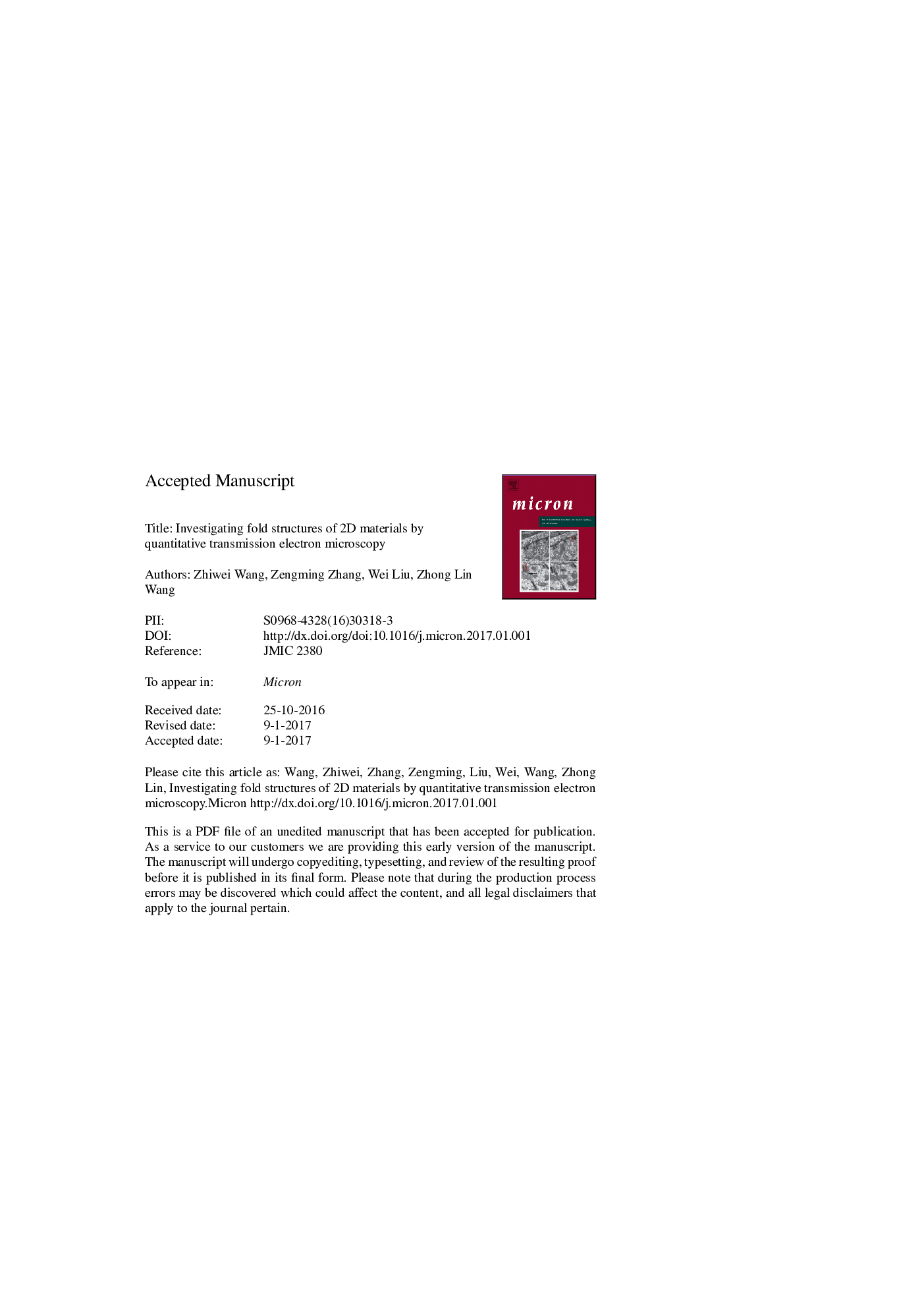| Article ID | Journal | Published Year | Pages | File Type |
|---|---|---|---|---|
| 5457060 | Micron | 2017 | 27 Pages |
Abstract
We report an approach developed for deriving 3D structural information of 2D membrane folds based on the recently-established quantitative transmission electron microscopy (TEM) in combination with density functional theory (DFT) calculations. Systematic multislice simulations reveal that the membrane folding leads to sufficiently strong electron scattering which enables a precise determination of bending radius. The image contrast depends also on the folding angles of 2D materials due to the variation of projection potentials, which however exerts much smaller effect compared with the bending radii. DFT calculations show that folded edges are typically characteristic of (fractional) nanotubes with the same curvature retained after energy optimization. Owing to the exclusion of Stobbs factor issue, numerical simulations were directly used in comparison with the experimental measurements on an absolute contrast scale, which results in a successful determination of bending radius of folded monolayer MoS2 films. The method should be applicable to characterizing all 2D membranes with 3D folding features.
Related Topics
Physical Sciences and Engineering
Materials Science
Materials Science (General)
Authors
Zhiwei Wang, Zengming Zhang, Wei Liu, Zhong Lin Wang,
